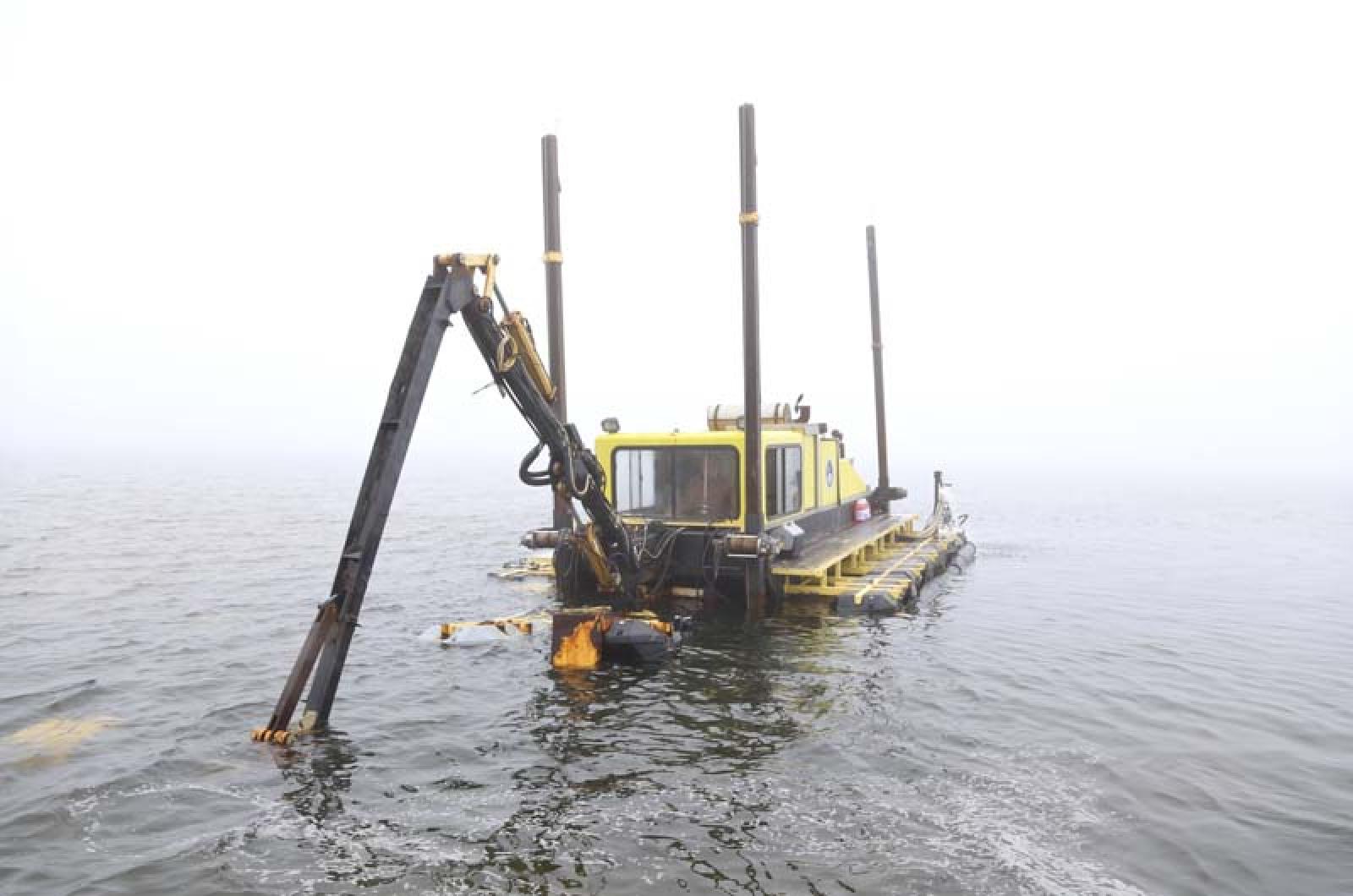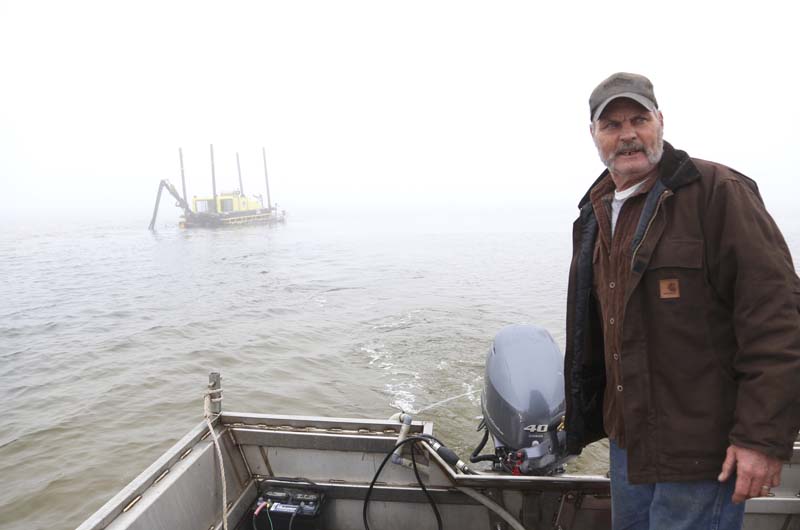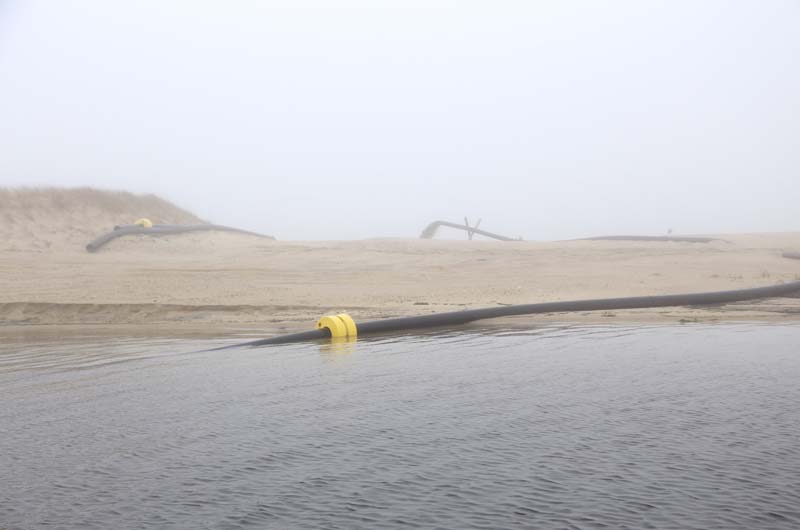The overall health of the Edgartown Great Pond has shown significant improvement over the past decade, according to a report released Tuesday from the nonprofit Great Pond Foundation. Research performed since 2009 by the foundation shows that Edgartown Great Pond water quality meets or exceeds targets for nitrogen levels, dissolved oxygen, temperature and water clarity.
“What’s important to know is that it was a collective effort,” said Emily Reddington, director of science and education at the foundation. “It happened because everyone cares about the pond.”
“It’s a significant step for a public, private and nonprofit partnership,” added Tom Wallace, president of the Great Pond Foundation.
Ms. Reddington attributes the positive trend to “10 years of careful management” by the group since the Massachusetts Estuary Project (MEP) last studied the 890 acre estuary in 2008 and found it was in poor health.
There are 16 great ponds on the Island, which the Commonwealth of Massachusetts defines as a pond or lake larger than 10 acres. Edgartown Great Pond holds a combination of salt and freshwater due to a dredging channel between the pond and the south shore making it “very unique and a little schizophrenic,” said Mr. Wallace.
In response to the MEP report, the foundation purchased and began operating a small, yellow dredge in 2009 with the assistance from the town shellfish committee, pond advisory committee and dredge advisory committee. The dredge, nicknamed “Nessie,” is used for “flushing and refreshing” the pond with salty, oxygenated ocean water during the winter months. Nessie pumps over 120 tons of sand from the pond 300 yards to the south shore every hour. Without it, algal blooms would cover the water in a mossy green and deplete the water of oxygen, as it did in the fall of 2008.
Nessie’s operator, Russ Wendt, said that the pond’s water quality has visibly improved since he started dredging six years ago. He added that back then the pond was “green along the edges” and “smelled like sulfur. Now, you can see right to the bottom.”
“I dropped a sledgehammer in it the other day and could see it 10 feet to the bottom,” said Mr. Wendt.
Water quality is at its worst in the summer months, which Ms. Reddington referred to as the “critical period” when water temperatures are at their highest, along with algae growth, and oxygen levels are at their lowest. Through its efforts the foundation found that the water temperature remained below 85 degrees for the 2016 and 2017 sampling seasons, the maximum healthy temperature for freshwater. Oxygen sampling performed in 2016 and 2017 also showed improvement. They studied the results from one water station 48 times over the two period, with the oxygen level falling only once below health standards.
“You wouldn’t want to live a life without oxygen,” said Ms. Reddington. “Neither would the pond.”
Along with dredging, the Martha’s Vineyard Shellfish Group, assisted by the Edgartown shellfish department and Great Pond Foundation interns, repopulated the pond with oysters that act as a natural filter in the estuary. Rick Karney, director emeritus of the shellfish group, explained that each individual oyster can filter up to 50 gallons of water a day and help remove nitrogen and excess nutrients from the ecosystem.
“They essentially pull out everything,” said Mr. Karney. “What they eat goes into their bodies and what they don’t eat is mixed into a mucus that they spit out [and dissolves in the water]. What we get is improved clarity of the water.”
Mr. Karney said that while the pond once resembled pea soup, efforts over the past decade have helped raise the oyster levels in the pond to one of the highest, making things “hunky-dory right now in Edgartown Great Pond.” He warned that conservationists and Island organizations should still be on guard for conditions, such as inclement weather and disease, that could threaten the oyster population.
“The pond was out of balance,” added Mr. Karney. “The balance is back, but we have to be diligent.”
The shellfish harvest also has economic benefits, valued at $107,645 in 2017, according to the most recent Edgartown town report. Eelgrass, a native seagrass that produces dissolved oxygen and serves as a habitat for shellfish, has also increased in distribution, according to a 2015 report by the shellfish group. The report describes how eelgrass beds have expanded in distribution and density since 2006.
Eelgrass thrives in clear water and struggles to grow when light cannot reach the estuary floor. The increased abundance of eelgrass, while declining worldwide in the past 40 years, highlights the interconnectivity of the different measures of estuary health.
Mr. Wallace emphasized that there is more work to be done and that the Great Pond Foundation is “more committed than ever to ongoing water monitoring.”
Ms. Reddington hopes to map out the pond’s eelgrass and continue annual sampling so the water quality data isn’t marred by seasonal variation. Her key takeaway from all the new data is that the recovery is a success story thanks to an Island community that’s willing to “put their hearts and hard work into it.”
“Martha’s Vineyard’s estuaries are some of the healthiest in the area,” said Ms. Reddington. “And they’re getting better.”










Comments (4)
Comments
Comment policy »